Italian invasion of Somalia and Egypt
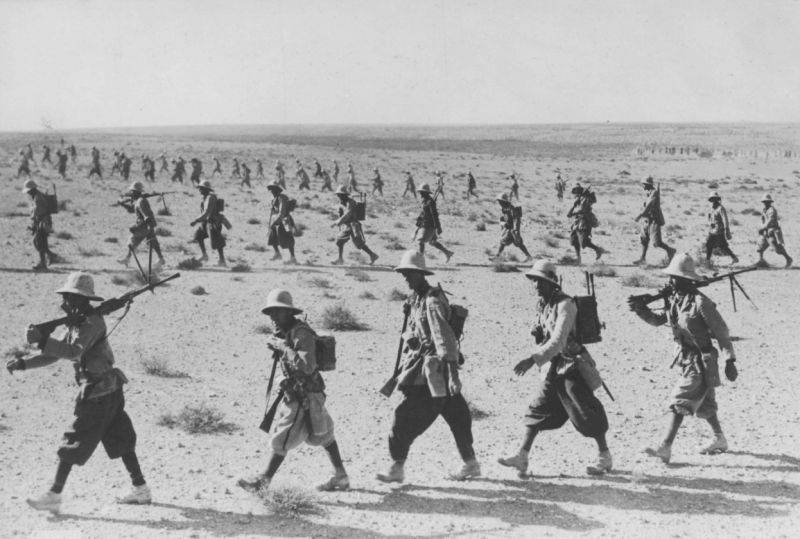
Having achieved some success in East Africa, the Italians decided to launch an offensive in North Africa, to capture the main base of the British fleet on the Mediterranean - Alexandria and the Suez Canal.
The need to capture Suez
Italy has deployed two battle groups in Africa: in North and North-East Africa. In Northeast Africa, a grouping was located under the command of the Viceroy of East Africa, Duke of Aosta (Amadeus of Savoy): 2 Italian divisions, 29 separate colonial brigades and 33 separate battalions. A total of about 300 thousand soldiers, over 800 guns, about 60 tanks, more than 120 armored vehicles and 150 aircraft. Italian regular troops numbered 70-90 thousand people, their basis was two infantry divisions: the 40th division "African Hunters" and the 65th division "Grenadiers of Savoy". The rest of the troops consisted of local indigenous (colonial) units. They were under the command of Italian officers.
Italian troops were targeting British Somalia, Sudan, Uganda and Kenya. The strategic position of the Italian army in East Africa was extremely vulnerable. There was no military industrial base, so the Italians were completely dependent on supplies from Italy. The shortest sea route from the Italian metropolis ran through the Suez Canal in Egypt, which was controlled by the British. The British also controlled the long route around Africa: their fleet dominated the Atlantic. Also, the British were in Gibraltar, that is, they kept an exit from the Mediterranean Sea. As soon as on June 10, 1940, Italy sided with Germany, her colonies in East Africa were in a difficult situation. After the surrender of France, the Italians gained access to Djibouti, an important port in French Somalia. At the same time, the British blocked Suez for Italy. Therefore, the Italians' invasion of Egypt was inevitable; they needed to rebuild the path to East Africa.
Thus, the position of the Italians in East Africa was weak, despite the superiority of forces over the British. Communications were stretched and unprotected, the coast was under attack from the British fleet. The indigenous forces (more than two-thirds of the forces) are poorly trained and relatively poorly armed. In Ethiopia, despite the brutal terror of the invaders and the absence of a central command, a new wave of the guerrilla movement arose. In most Ethiopian provinces, the Italians controlled only the cities and towns where their garrisons were stationed. Some of them were blocked by partisans, roads were cut, and Italian garrisons had to be supplied by air. It was enough for the British to enter Ethiopia, as a large-scale uprising would immediately begin there. All this constrained the operational capabilities of the Italian army.
In Libya, there was the second operational-strategic grouping of Italian troops under the command of Marshal Rodolfo Graziani (since August, earlier the commander was Marshal Balbo). Large regular forces were stationed in Cyrenaica and Tripolitania - two field armies. On the border with Egypt, in Tobruk - the 10th Army of General M. Berti, which had 6 divisions (including two colonial and one blackshirts). Blackshirts in Italy were called the armed detachments (militia) of the fascist party. The 5th Army of General I. Gariboldi in Tripolitania was aimed at French Tunisia. It consisted of 8 divisions, including two Blackshirt divisions. After the surrender of France, part of the troops of the 5th Army was transferred to join the 10th. By September 1940, the 10th Italian army included 10 divisions, the 5th army - 4. The Libyan grouping of the Italian army numbered over 230 thousand people, was armed with over 1800 guns and more than 300 aircraft. The position of the Italian troops in North Africa was better than in East. The British kept Italian communications under attack, but could not completely interrupt them.
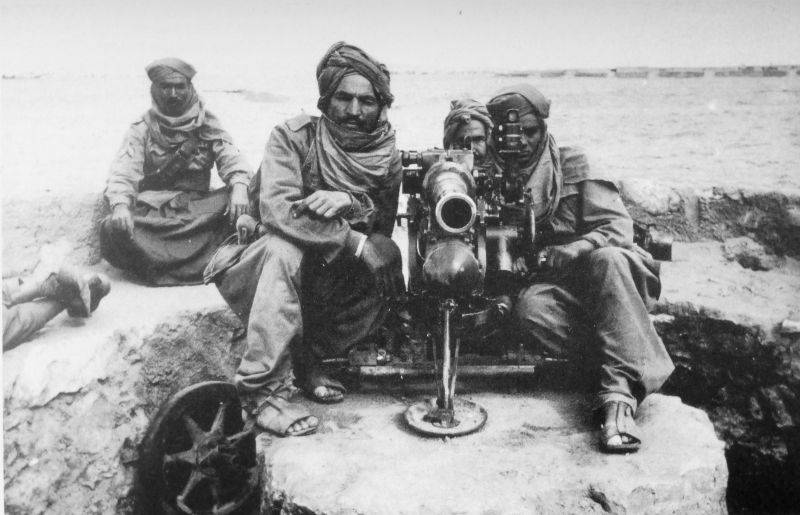
British defense
The British command was well aware of Italy's desire to seize the Suez Canal and the British colonies in North and East Africa. However, the main forces of the British army were concentrated in Europe, and after the defeat of Belgium and France - on the defense of the British Isles. As a result, the British did not have sufficient forces to defend their colonies in the region. In June 1940, the troops of the British Empire were dispersed over a large territory: more than 60 thousand people in Egypt (half are Egyptians), more than 27 thousand in Palestine, 9 thousand in Sudan, 22 thousand in Kenya, about 1,5 , 2,5 thousand - in British Somalia, 160 thousand - in Aden. There were no tanks or anti-tank artillery in Sudan, Kenya and Somalia. In Egypt and Palestine, the British had over 80 aircraft, in Aden, Kenya and Sudan - more than XNUMX aircraft. That is, in aviation the British were significantly inferior to the enemy. The advantage of the British was dominance at sea and the presence of a developed network of naval bases and ports.
The British tried to move reinforcements from South Africa, India, Australia and elsewhere, but it took time. Therefore, the British command tried to pin down the enemy in East Africa with the help of Ethiopian guerrillas. Already in the spring of 1940, a "plan for insurgency and propaganda" was developed, which provided for the expansion of the rebel movement in Ethiopia. In June 1940, the British began negotiations with the exiled Ethiopian Emperor Haile Selassie. Soon the Ethiopian monarch arrived in Sudan to lead the Resistance. The scale of the guerrilla movement in Ethiopia has expanded significantly. At the same time, the British did not create a regular Ethiopian army and agreed to the formation of a symbolic three battalions. Ethiopian patriots and deserters fleeing to Sudan were treated as prisoners of war and used to build roads. After the victory, London planned to establish its control over Ethiopia. Therefore, Britain infiltrated its agents into the ranks of the Resistance and tried to lead the partisans.
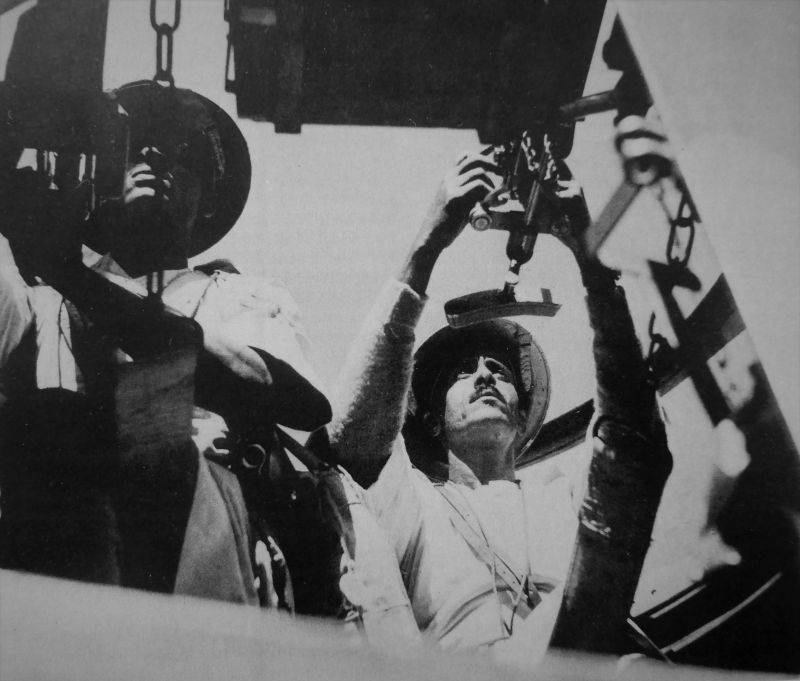
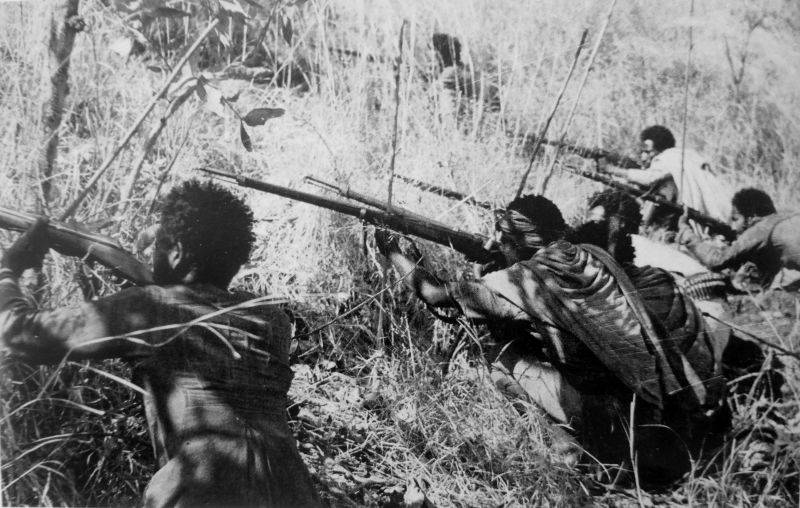
Battle in East Africa
In early July 1940, Italian troops launched an offensive from Ethiopia deep into Sudan and Kenya. The purpose of the invasion was determined by the directive of the chief of the Italian General Staff, Marshal Badoglio, dated June 9: to occupy the important points of Kassala, Gallabat, Kurmuk in the border zone of Sudan, and the territory of Kenya - Todenyang, Moyale and Mondera. The capture of these strongholds opened the way into the interior of Sudan and Kenya.
In the northern sector of the Sudanese direction, two infantry brigades and four cavalry regiments of the Italian colonial forces (6,5 thousand soldiers), with the support of tanks, armored vehicles, artillery and aviation, tried to take Kassala on the move on July 4, where a garrison of 600 people was located (Sudanese infantry and police), which was supported by 6 tanks. Despite the overwhelming superiority of the enemy, the Sudanese put up stubborn resistance. Italian troops took the city, but lost 500 people and 6 tanks. British troops also fiercely resisted in other directions. But the forces were unequal. Sudanese and Kenyan troops could not withstand the onslaught of the superior forces of the enemy with a technical advantage. British forces switched to guerrilla tactics.
Also, with the start of the offensive of the Italian army in its rear in Ethiopia, an insurgency broke out with renewed vigor. The entire northwest and center of the country was in revolt. As a result, the reserves of the Italian army were shackled. The Italians could not deploy additional forces to develop an offensive deep into Sudan and Kenya. The Italian command decided to go over to the defensive in the Sudanese and Kenyan directions.
At the same time, the Italians conceived an invasion of British Somalia. To the south and west of British Somalia, 35 thousand people were concentrated. group under the command of Guglielmo Nasi, commander of the Eastern Sector. A total of 23 battalions, 21 artillery batteries and 57 aircraft. The Italians had L3 / 35 light tanks and M11 / 39 medium tanks. The British had 5 colonial battalions in Somalia (including reinforcements from Aden). A total of 4-6 thousand people under the command of Brigadier General Arthur Chater. The British lacked tanks, armored vehicles, anti-tank artillery, and there was a sorely lack of artillery. The Italians had complete air supremacy.
On the night of August 3, 1940, the Italian army crossed the border. Due to the rocky terrain, there were only three roads to Berbera, the capital of British Somalia and the only major port. Therefore, the Italian infantry, reinforced with artillery and tanks, advanced in three columns on Hargeisa, Odwaina and Zeila. On 5-6 August, the Italians captured Zeila, Hargeis and Odwain. Chater, alarming the enemy with mobile detachments, ordered the main forces to withdraw to Tug-Argan. On August 7-8, two battalions arrived from Aden to help. The British Middle East command in Cairo ordered additional forces with artillery to be transferred to Somalia, but they were late for the decisive battle. On August 11, Major General Alfred Godwin-Austin, the new commander of the British forces in Somalia, arrived. On August 10, the Italian army reached the enemy positions at Tug-Argan. The British held a dominant position on the route to Berbera. On August 11, the Italians launched an assault and, during stubborn battles, captured a number of hills. The African and Indian colonial units of the British fought back fiercely. However, the forces were unequal, the Italians practically surrounded the British group, cutting it off from the Berbera.
On August 14, Godwin-Austin informed the high command that further resistance at Tug-Argan was pointless and, apparently, would lead to the loss of all British troops, and the retreat would save most of the forces. On August 15, he received General Archibald Wavell's permission to withdraw. The retreat was covered by Scottish and African riflemen. The British Navy began evacuating the civil administration and rear services. On August 16, troops began to evacuate from Berbera across the strait to Aden. On the evening of 18 August and the morning of 19 August, the last British left Berbera. In total, about 7 thousand people were taken out. Most of the local Somali soldiers (Somali Camel Cavalry Corps) remained in their homeland.
So the Italians took over British Somalia. This was Italy's only major victory in East Africa. Both sides lost 200 men in battles. However, the local native troops were not recorded as losses. So, the British believed that the Italian native troops lost up to 2 thousand people, and the Somalis, who fought on the side of the British, - about 1 thousand.
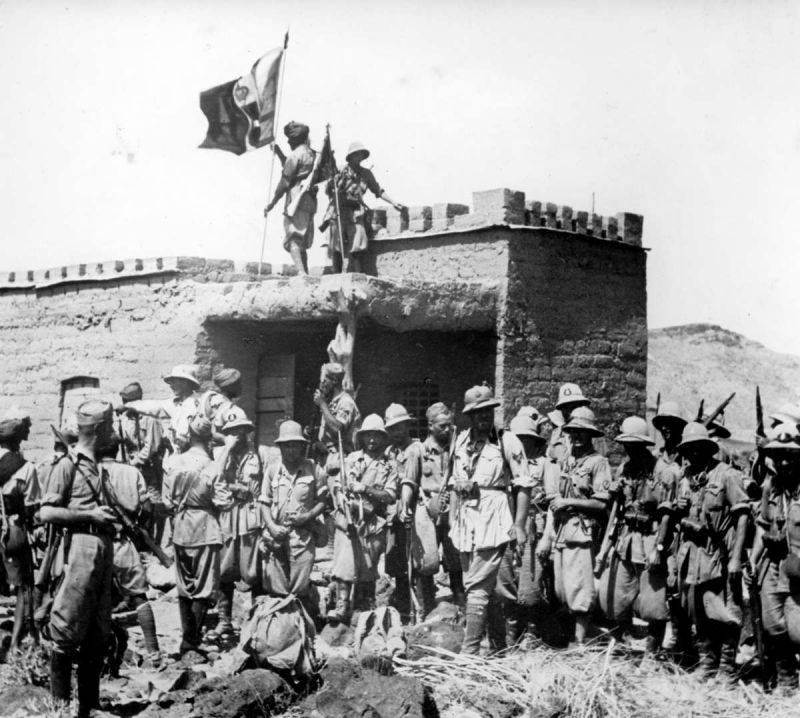
Invasion of Egypt
Having achieved some success in East Africa, the Italians decided to launch an offensive in North Africa, to seize the main base of the British fleet in the Mediterranean - Alexandria and the Suez Canal, in order to cut off the main communication of England leading to the Middle East and India. The Italian group in Libya numbered over 230 thousand people. Troops of the 10th Army of General Bertie participated in the Egyptian operation. Of its five corps at the beginning of the invasion, three were to take part: the 21st, 23rd and the Libyan corps (7 divisions and the Maletti mechanized group). The Italians had 200 tanks and 300 aircraft from the 5th Aviation Squadron.
In June 1940, the British forces in the Libyan direction were combined into the Army "Nile" under the command of Richard O'Connor. It consisted of the 7th Panzer Division and the 4th Indian Infantry Division, two separate brigades. The army included 36 thousand soldiers, 65 tanks and 48 aircraft. Before the beginning of active hostilities, skirmishes took place on the border. At the beginning of September, the activity of Italian aviation intensified, striking enemy airfields. The British Air Force responded with attacks on enemy military installations and units.
The Italian command planned to conduct an offensive with the forces of the 23rd corps in the coastal strip, where the main road passed and the Libyan corps with the Maletti group to the south through the desert. The 21st corps was in reserve. However, the Italian commander Graziani did not receive vehicles for the Libyan divisions. Therefore, the Libyan corps began to attack in the first echelon on the coastal flank. Maletti's mechanized group also changed the direction of the offensive due to errors in command and intelligence about the presence of large tank forces of the British. The flank maneuver was canceled altogether, the tanks were directed to the seaside flank.
On the night of September 12-13, 1940, Italian aircraft dropped a large number of special bombs on the coastal road between Sidi Barrani and Mersa Matruh. On the morning of September 13, after artillery preparation, the Italian 10th Army launched an offensive. In the face of much superior enemy forces, the British forces (7th Armored Division), with little resistance, began to withdraw. The Italians, advancing behind the enemy, already on the first day of the operation captured the important point of Es-Sallum and on the 16th reached Sidi Barrani. The British left the city under threat of encirclement.
This was the end of the Italian offensive. The Italians advanced 50-90 km and entrenched themselves at Sidi Barrani. The front has stabilized. The stoppage of the offensive was caused by the loss of control of the mobile group on the southern flank at the very beginning of the operation, problems with the supply of troops and a lack of transport for the infantry. The British Mediterranean Fleet began to disrupt enemy communications. In addition, the poor quality of the Italian army affected. The Italians, without the support of the Germans, feared decisive operations. However, the British continued their retreat and stopped only at the city of Mersey Matruh. As a result, a "no-man's" territory 130 km wide was formed between the enemy.
Thus, the Italian army, having a great advantage in manpower, artillery, tanks and aviation, was unable to use it and defeat the British in Egypt. The British quickly recovered, built up their grouping in Egypt and launched a counteroffensive in December 1940.
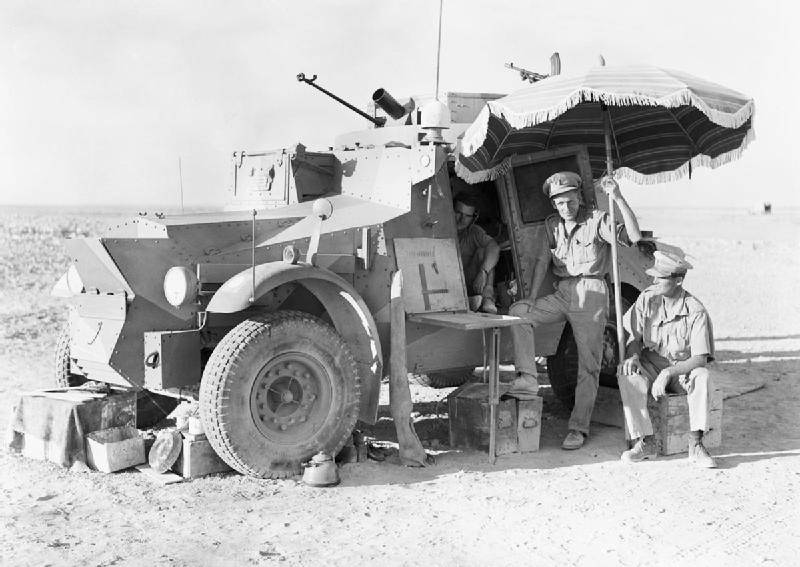
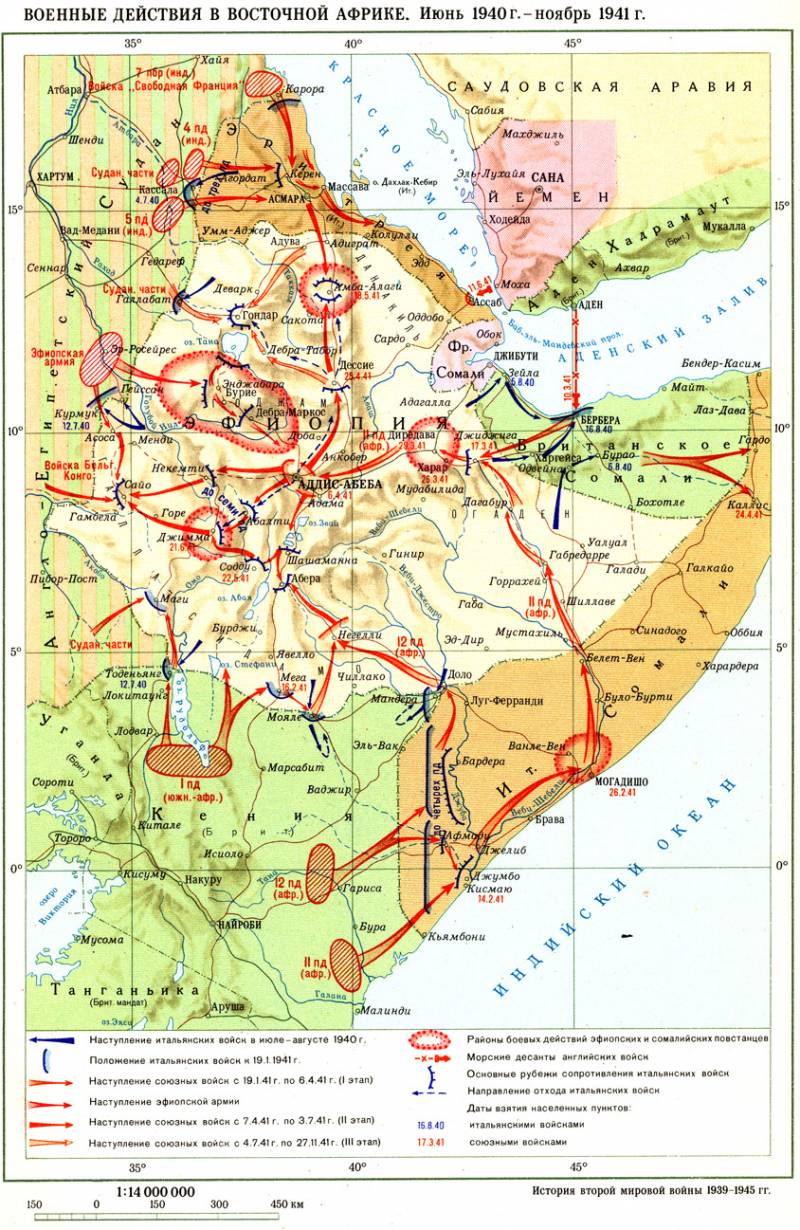
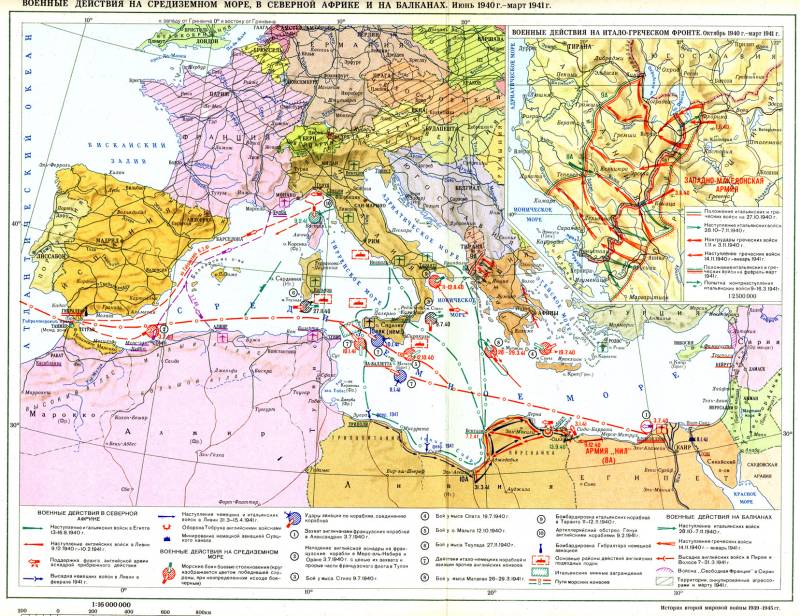
Information